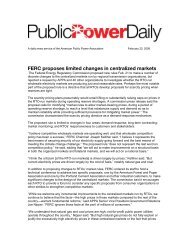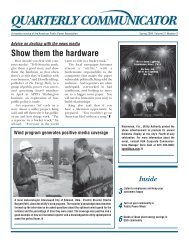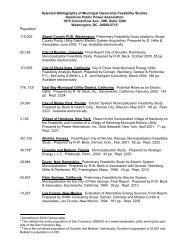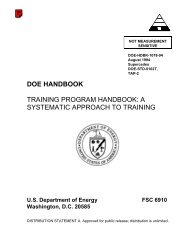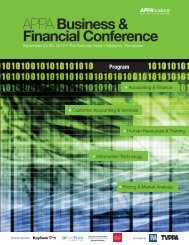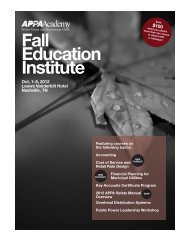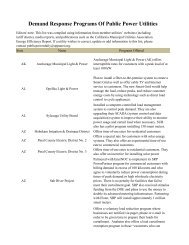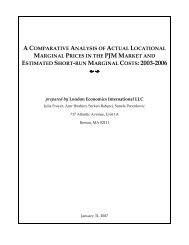Safeguarding Classified and Sensitive But Unclassified Information ...
Safeguarding Classified and Sensitive But Unclassified Information ...
Safeguarding Classified and Sensitive But Unclassified Information ...
You also want an ePaper? Increase the reach of your titles
YUMPU automatically turns print PDFs into web optimized ePapers that Google loves.
classified national security information. Where feasible, when non-Federal entities communicate<br />
with Federal agencies the use of “CONFIDENTIAL,” “SECRET,” <strong>and</strong> “TOP SECRET,” in<br />
association with other locally established descriptors should be eliminated in order to avoid<br />
confusion.<br />
What is not <strong>Classified</strong> National Security <strong>Information</strong><br />
In addition to knowing what classified information is, it is also important to know what is not, <strong>and</strong><br />
should not, be considered or referred to as classified information. The following are examples of<br />
various caveats used by different government agencies to denote information that is considered<br />
“sensitive” but unclassified:<br />
• For Official Use Only (FOUO)<br />
• Limited Official Use (LOU)<br />
• Official Use Only (OUO)<br />
• Law Enforcement <strong>Sensitive</strong> (LES)<br />
• <strong>Sensitive</strong> Security <strong>Information</strong> (SSI)<br />
• Protected Critical Infrastructure <strong>Information</strong> (PCII)<br />
• And other caveats used to identify <strong>and</strong> categorize information as sensitive, but<br />
unclassified.<br />
These categories of information are considered sensitive <strong>and</strong> do require a “need-to-know” for<br />
access as well as protection against unauthorized disclosure; but, they do not meet the<br />
st<strong>and</strong>ards for classification <strong>and</strong> thus, do not fall within the purview of the classification system.<br />
More information on sensitive but unclassified information is provided in Section II beginning on<br />
Page 25 of this booklet.<br />
How <strong>Information</strong> Becomes “<strong>Classified</strong>” <strong>Information</strong><br />
The Order sets U.S. Government policy for properly classifying national security information that<br />
must be protected from unauthorized disclosure. <strong>Information</strong> is classified by one of two methods -<br />
- ORIGINAL classification or DERIVATIVE classification.<br />
Original classification is the initial determination that information meets the st<strong>and</strong>ards <strong>and</strong><br />
criteria for classification <strong>and</strong> requires protection against unauthorized disclosure. Only<br />
U.S. Government officials to whom this authority has been delegated in writing <strong>and</strong> who<br />
have been trained in classification requirements have the authority to originally classify<br />
information in the first instance. These officials are referred to as “Original Classification<br />
Authorities” (OCA’s). Only appropriately delegated OCA’s are authorized to perform<br />
original classification actions.<br />
Derivative classification is the process whereby classified information is extracted from an<br />
existing classified source, such as a document, or a Security Classification Guide<br />
approved <strong>and</strong> published by an authorized original classification authority, <strong>and</strong> used in a<br />
newly created document. The person performing the derivative classification action<br />
derives, or carries forward the classification instructions from the source document to the<br />
newly created document. Therefore, the authority to classify the information is based on<br />
the existing classified source or guide. State, Local, Tribal, <strong>and</strong> Private Sector personnel<br />
7



